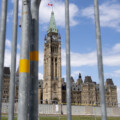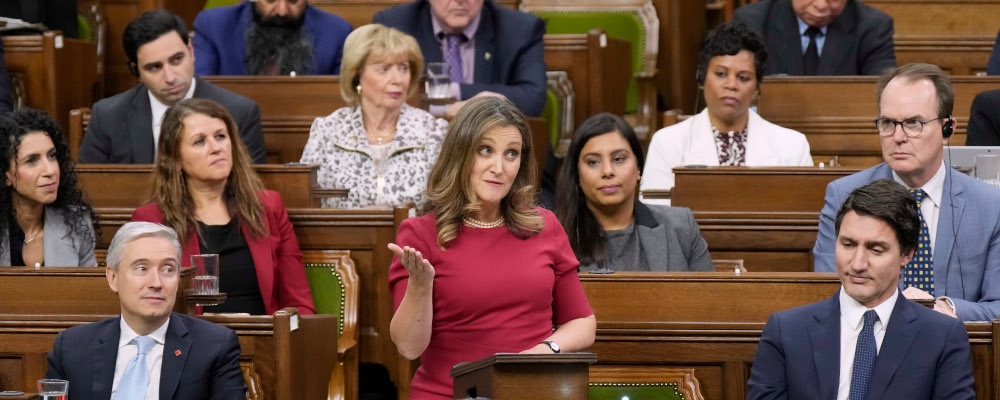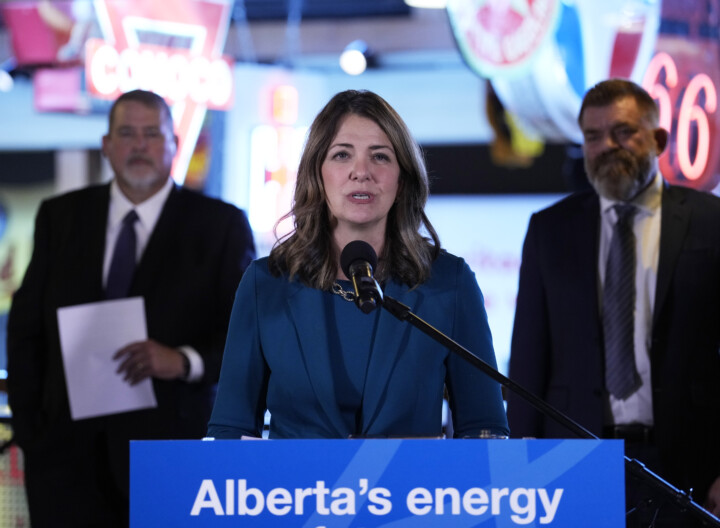Heading into the final month of a tough year politically, Prime Minister Justin Trudeau can be thankful for at least one thing: The economic picture could have been a lot worse.
The nation is feeling the strain from higher interest rates and growth is stalling, but we’ve yet to see a deeper economic storm many feared earlier this year.
The labour market continued to churn out jobs this year—more than 400,000—putting 2023 on track to be one of the strongest years ever for employment gains.
For all of 2023, growth is now projected at about one percent—which is not too bad given the circumstances. The federal government had forecast growth of just 0.3 percent in its March budget.
Meanwhile, price pressures have eased with underlying inflation showing some signs it may finally be breaking toward three percent—within striking distance of the Bank of Canada’s target range.
Hope for coveted soft landing
There’s just enough impulse in the data to keep Trudeau and his finance minister, Chrystia Freeland, hopeful that a deep downturn will never come, and that growth will meaningfully resume by the middle of next year with inflation in check and interest rates normalizing. The much-coveted soft landing.
It’s hard to overstate how much Trudeau and Freeland are invested in that soft-landing scenario. Their political futures hinge on it.
Trailing badly in the polls, Trudeau is trying to buy as much time as possible before the next election (which could take place as late as October 2025) hoping tough economic conditions for Canadians reverse course.
Falling inflation and interest rates will not only buoy confidence and keep consumers spending, but they will also give the governing Liberals scope to finance a semblance of an agenda. For a government that has sought to build a political coalition around spending, they’ll be happy to take whatever fiscal room they get.
So, it’s no surprise that Freeland has been more than happy to embrace the soft-landing assumptions as the basis for her budget planning, as evidenced again by her fiscal update last week. After all, it remains the base case scenario of private-sector forecasters and financial markets.
But what is a reasonable basis for fiscal planning is not necessarily judicious or prudent.
The government doesn’t need to be a passive taker of economic assumptions. It’s not forced to accept the prevailing wisdom of economists—who have never been good at predicting major turning points anyway.
Economic assumptions made in budget documents are as much political decisions as they are forecasts.
Nothing new
This is not a very new idea. This is how budgets had been done for much of the past three decades in Canada.
From the mid-1990s right up until the pandemic, both Liberal and Conservative governments applied prudence into their fiscal planning. Building and sustaining credibility was a policy priority of its own.

It began with Liberals in the mid-1990s when then-Finance Minister Paul Martin introduced multiple layers of cautiousness into his budget-making to signal little tolerance for missing budget targets and to establish credibility.
Even as the nation’s underlying finances improved considerably, the practice of adding risk accounting into the budget continued through Stephen Harper and even Trudeau’s first finance minister, Bill Morneau, right up until the pandemic.
During the pandemic, continuing the practice seemed outright pointless. But we are no longer there.
Today, we are paying tens of billions of dollars in interest on the massive debt that we’ve accumulated over the past three years. And in a world of deglobalization and global power conflict, risks to the economic outlook remain elevated.
Is this really the environment where fiscal planning should be based on benign economic scenarios? Is there a case to reintroduce credibility as an explicit government priority?
These are political decisions. No government is beholden to totally accept private-sector forecasts.
The widespread skepticism that has greeted Freeland’s new fiscal anchors (including a pledge to cap deficits at one percent of GDP starting in 2026) should be taken as a warning sign. Almost no one believes the Liberals will keep to these guardrails should the fiscal envelope become stressed.
The thing with credibility is that it’s hard to earn and easy to lose, and you don’t know how much of it you have until you need it.
Recommended for You
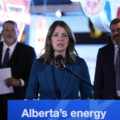
Canada’s economy is going nowhere without Alberta

The solution is a ‘mission-driven research agenda’: Five takeaways on how Canada’s post-secondaries can help boost the economy and increase competitiveness

Like the Blue Jays, Carney’s first budget falls just short
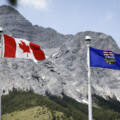
‘It’s a big hole we dug’: Why Carney’s budget success depends on Alberta
